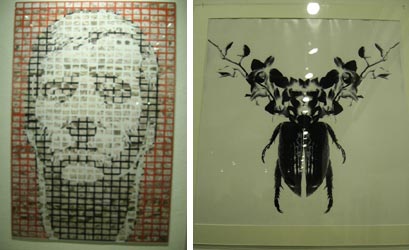2014 Parsons Festival: Making/Meaning
Over 100 exciting student works from across all disciplines, curated for the first time by graduate students

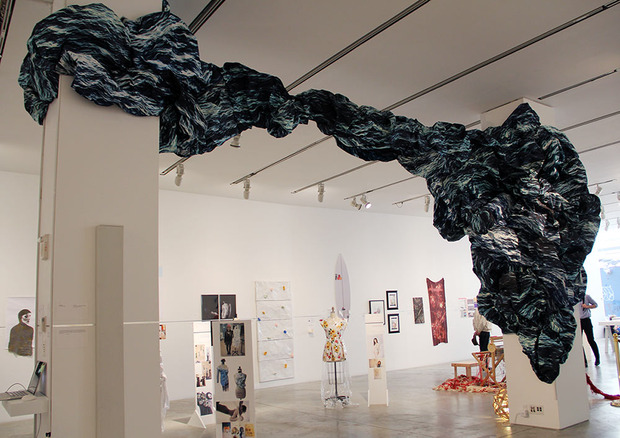
The Parsons Festival is an annual showcase of inventive student work shared with the Parsons community and the public. One of the most exciting factors this year is that for the first time, graduate students (rather than outside guest curators or a professor) have selected the work of their peers for “Making/Meaning“—an exhibition that reveals the creative process of young, gifted undergraduates and associate’s degree students. An open call resulted in over 560 submissions, which the group of graduate students narrowed down. The presented works not only represent the diverse mediums and disciplines of Parsons students are exploring, but also show the ideas and current issues (political, cultural, etc) that sparked these students to create.
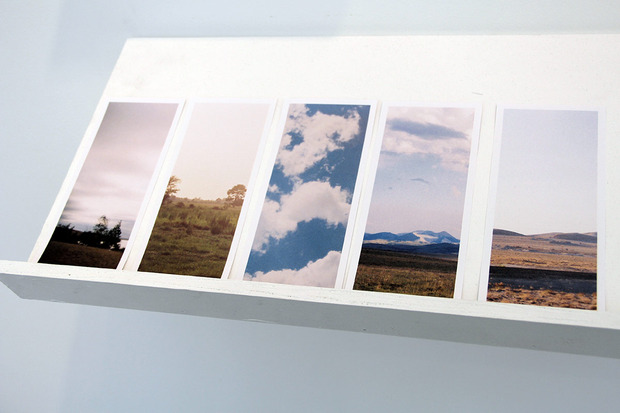
Graduate students in the School of Art and Design History and Theory and the School of Design Strategies who wanted to have this first-hand curating experience enrolled in a new course this semester called “Curating Art and Design,” co-taught by a trio of faculty: John Jerard, Carin Kuoni and Andrew Cornell Robinson. The course explored what it means to be a curator, their ethical positions, history of curatorship and more. It started with visiting exhibitions all over the city—from Soho galleries to the New York Historical Society—to learn how different institutions are using their spaces. The students were the ones who determined the theme, Making/Meaning—and selected submissions that exemplified how Parsons students think and approach making.
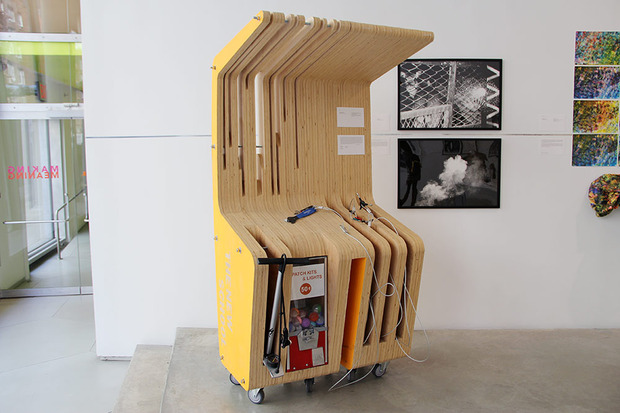
Interestingly, the top definition for “curate” refers to a “clergyman,” and the first use of its verb form was recorded in 1909 (according to Merriam-Webster); the graduate students remark that Spell Check still doesn’t recognize the word “curating.” While throughout the history of art, focus was on the roles of the artist and patron, the rise of the curator has become a more recent phenomenon that reflects the needs of our contemporary culture. “As a society, we are much more involved in public representation of what we do and what other people do,” says Kuoni. “So the opportunities to have public exchanges about our activities are multi-fold and extend way beyond exhibitions, institutions or museums. You now curate menus in restaurants or fashion shows; there are more opportunities for people to be active in a public realm. I also think that there’s so much information that we all need to understand and be able to relate to and they are the intermediary—or interpreter—of a creative person’s output.”
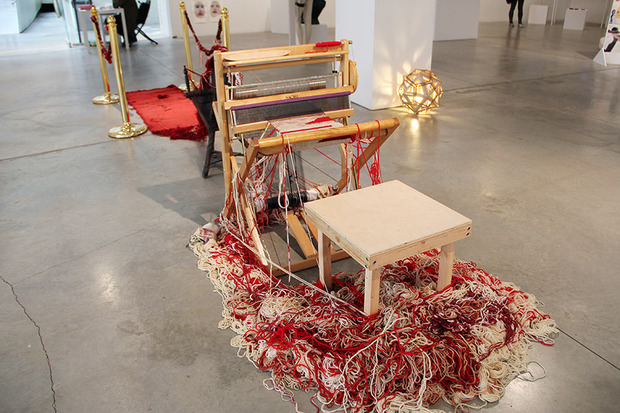
Robinson points out the “tug-of-war” that happens today between being conceptually-based versus craft-orientated; yet the exhibition has become a learning experience that shows the two can co-exist—and to some degree, how the Parsons faculty is supporting that. “They’re looking at approaching their discipline in a multi-disciplinary way,” says Robinson. Noting that fashion is a very craft-oriented field, Robinson continues, “What’s interesting that I see is that when we’ve been looking at a lot of the fashion work that was submitted, there’s a highly conceptual basis to the way that students are working and being taught here. They’re not just being asked to do a redux of something that happened 100 or 50 years ago; they’re asked to bring to bear their own ideas, their own life experiences and how that informs a piece. That’s that whole tie between how the making of an object, and the meaning that’s generated from it, seems to manifest within some of the student work.”
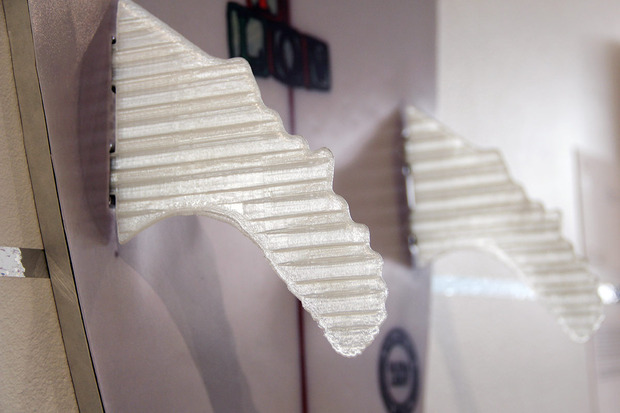
The result is a takeover of the ground floor at the Sheila C. Johnson Design Center, where student work has filled every nook and cranny. Rather than organize the exhibition by discipline (as is traditionally done), works from different mediums, disciplines and class years are arranged side by side. Some of the works not only show the final product, but also reveal physical evidence of the creative process, such as a sampling of mock-ups and treatments used to create a book.
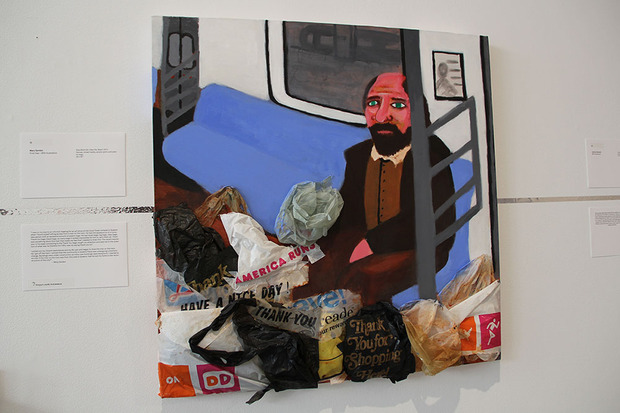
There are moments that viewers can see the fingerprints left by the student curators. Kuoni encouraged them to expose the eye-level line (the 57″ line that most artwork is hung on) in museums, creating a visual mnemonic device that could tie all of the different works together. You can see it as a silver line made of reflective material that travels along the walls, throughout the entire space. “It’s also the idea of this event horizon; we are always gauging what we see against something else,” says Kuoni. Also, 45 of the works have a URL written under their description; they link to an audio interview with the specific student, giving the student a rare opportunity speak more personally on their work. And, to facilitate a dialogue—after all, Parsons is an educational institution—viewers are encouraged to respond to the work by drawing or writing their thoughts on a Post-it note and sticking it on the wall, under the artist statement. Future viewers will read those Post-its and contribute their ideas to the growing conversation.
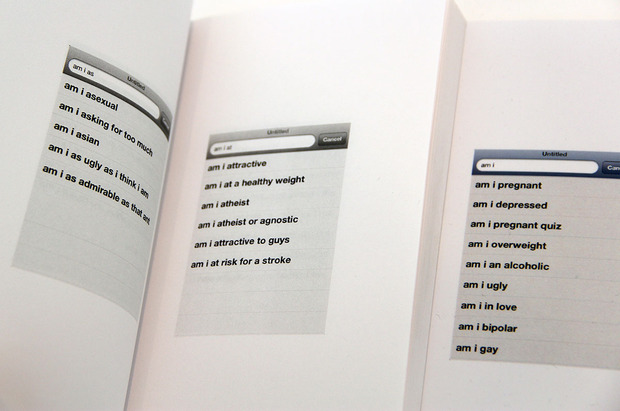
Some highlights from the exhibition include “Am I,” a conceptual project by Sarah Marshall (BFA Fine Arts) for which she alphabetically ordered Google search suggestions for the phrase “Am I…” Showing results that pop up for “Am I a…,” “Am I ab…,” “Am I ac…,” and so forth, Marshall portrays the search engine as a modern-day oracle. “Humpback Whale Inspired Surf Fins” by Grant Goldner (BFA Product Design) is quite self-explanatory—he created a surfboard with irregular bumps on the fins, mimicking those of the humpback whale, to make the surfboard go faster. Phuong Nguyen’s (BFA Design and Technology) “Speech/Contact” has handmade soaps embedded with Vietnamese and English proverbs; the message decays and changes with each use—but also shows how they’re consumed and absorbed by the body after a “wash.” There are site-specific installations, a stop-motion animation made from cut-paper figures, a bicycle outpost that has a gumball machine that spews out patch kits for 50 cents, and much, much more—thought-provoking works that will take you out of any creative rut you’re currently in yourself.
Walking through “Making/Meaning” is like viewing a snapshot of the future—these students, some of who will be graduating in just a few weeks, will form the next generation of designers and artists.
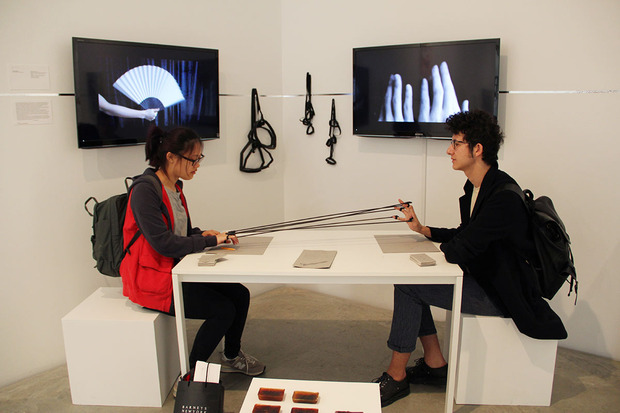
“Making/Meaning” opens today, 28 April 2014 and will be on view until 25 May, as a part of the 2014 Parsons Festival. Located at the Sheila C. Johnson Design Center on 2 West 13th Street, the exhibition is free and open to the public. For those not in the NYC area, visit the Parsons Festival website to view student projects online and keep an eye out as the curators will be blogging over the course of the exhibition and showing the “Object of the Day.”
Photos by Nara Shin

